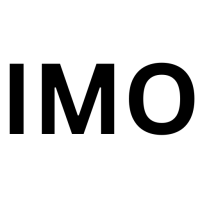Summary
Cut through the green tape
We don't push agendas. At Net Zero Compare, we cut through the hype and fear to deliver the straightforward facts you need for making informed decisions on green products and services. Whether motivated by compliance, customer demands, or a real passion for the environment, you’re welcome here. We provide reliable information—why you seek it is not our concern.
Details
- Global
Deep dive
Background
The International Maritime Organization (IMO) is in the lead of global efforts to reduce greenhouse gas (GHG) emissions from the shipping industry, which accounts for nearly 3% of global emissions. As part of its Initial GHG Strategy, adopted in 2018, the IMO set a target of reducing total annual GHG emissions from international shipping by at least 50% by 2050 compared to 2008 levels. The revised IMO GHG Strategy adopted in 2023 has gone on to establish enhanced targets to achieve net-zero GHG emissions from international shipping by or before 2050. Amendments to the International Convention for the Prevention of Pollution from Ships (MARPOL) Annex VI which were made during the development of IMO's initial GHG strategy require ships to enhance their energy efficiency and ultimately lower their GHG emissions. Accordingly, all ships are required to calculate and report their Energy Efficiency Existing Ship Index (EEXI), and their Carbon Intensity Indicator (CII) and CII rating. A ship's attained EEXI is a measure of its energy efficiency compared to a baseline while the CII gives the annual reduction factor required to ensure ongoing improvement in a ship's operational carbon intensity, maintaining it within a certain rating level. IMO's efforts to cut GHG emissions date back to 2011, with the introduction of efficiency-focused indicators such as Energy Efficiency Design Index (EEDI), and the Ship Energy Efficiency Management Plan (SEEMP). The EEXI and CII, adopted in 2021, are the latest steps in the IMO’s strategy, focusing on reducing emissions from existing ships and improving their operational efficiency. These regulations represent a significant shift toward stricter enforcement of emissions reduction in the maritime sector.
Requirements
The EEXI and CII regulations require ships to meet specific energy efficiency and carbon intensity standards. The EEXI sets a minimum energy efficiency threshold for existing ships, requiring vessel owners to assess and modify their ships to meet the standard, often through technical upgrades such as engine power limitations or the installation of energy-saving technologies. The CII, on the other hand, measures a ship’s operational carbon intensity based on its annual emissions and transport work, assigning a rating from A (best) to E (worst). Ships must report their EEXI technical files and CII ratings annually, with data submitted through the IMO’s Data Collection System (DCS). The reporting process involves calculating emissions (using IMO-approved methods contained in MARPOL Annex VI), including fuel consumption and distance traveled. Compliance with EEXI requirements began in 2023, while CII ratings are enforced starting in 2023, with annual reporting and rating updates required thereafter.
Affected Ships
The EEXI and CII regulations apply to nearly all commercial ships over 400 gross tonnage engaged in international voyages, including cargo ships, tankers, bulk carriers, container ships, and passenger ships. The UK Department for Transport estimates that there were around 68,000 commercial ships in the world at the end of 2023 giving an indication of the number of ships that are potentially under the scope of the EEXI and CII regulations. The regulations are designed to ensure that both new and existing vessels contribute to the IMO’s emissions reduction targets. While the EEXI focuses on technical improvements to ship design and machinery, the CII emphasizes operational measures, such as optimizing fuel efficiency. The EEXI monitors hardware practices while the CII targets operational practices of ships.
Penalties for noncompliance
Noncompliance with the EEXI and CII regulations can result in unfavorable outcomes for shipowners and operators. Ships that fail to meet the EEXI requirements may not be considered seaworthy and could be prevented from operating until modifications are made. For the CII, ships that get a D rating for three consecutive years or an E rating in a single year must submit a corrective action plan to improve their performance. Persistent noncompliance could lead to penalties imposed by flag states or port authorities. Moreover, poor CII ratings may affect a ship’s commercial viability, as charterers and customers increasingly prioritize shipowners with environmentally sustainable practices.


